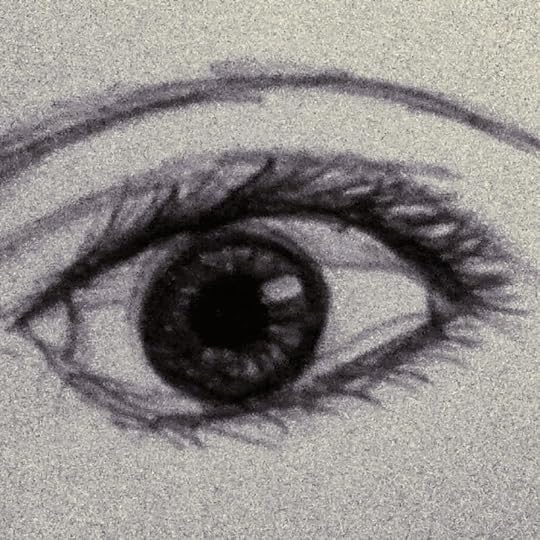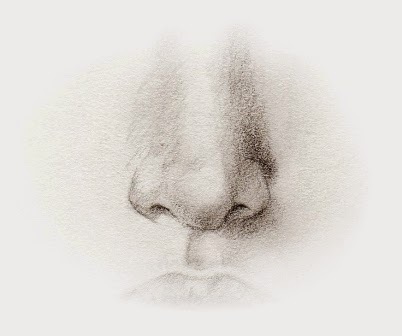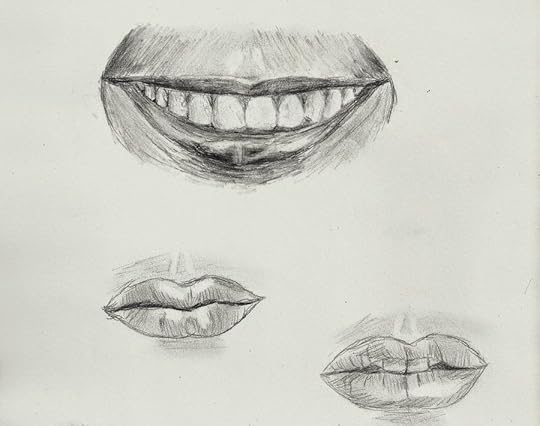Life Class - Friday Flash
 They seem to keep their pets in two display cases towards the top of their countenances. Some double reinforce the case with vitreous frames, while others provide a little vitreous porthole for greater viewing. We had thought the creatures to be fish, but their range of movement seems very limited within their restricted space and really only laterally, as if bobbed from side to side by the waves. So perhaps they are planted and therefore closer to anemones or jellyfish. They don’t do much these pets, just press themselves against the perimeter of their cases forlornly. Occasionally some water is displaced through imperceptible movement and leaks out of the case and down the countenance. Peripheral flesh sluices react very rapidly to this from below and sweep the water away, but the surface beneath remains shiny, although there me be residue of salt. Little shutters come down at night veiling the pets from sight, presumably to allow the keepers access for maintenance and feeding. These shutters themselves seem organic as they can flicker and vibrate at various points during this period. Perhaps that is resonant from the pets’ sheer pleasure at being fed. Perhaps the keepers are visiting unimaginable acts upon them.
They seem to keep their pets in two display cases towards the top of their countenances. Some double reinforce the case with vitreous frames, while others provide a little vitreous porthole for greater viewing. We had thought the creatures to be fish, but their range of movement seems very limited within their restricted space and really only laterally, as if bobbed from side to side by the waves. So perhaps they are planted and therefore closer to anemones or jellyfish. They don’t do much these pets, just press themselves against the perimeter of their cases forlornly. Occasionally some water is displaced through imperceptible movement and leaks out of the case and down the countenance. Peripheral flesh sluices react very rapidly to this from below and sweep the water away, but the surface beneath remains shiny, although there me be residue of salt. Little shutters come down at night veiling the pets from sight, presumably to allow the keepers access for maintenance and feeding. These shutters themselves seem organic as they can flicker and vibrate at various points during this period. Perhaps that is resonant from the pets’ sheer pleasure at being fed. Perhaps the keepers are visiting unimaginable acts upon them.  The next structure is a mystifying one. We had thought it to be some sort of chemical grow bag, with two holes at the bottom for infusions and we have certainly seen the powdered white fertiliser and nitrates inserted. There must be some internal duct piping for channelling the nitrates up against gravity. Yet we have also seen red liquid dispensed back down through the apertures, so the crop yield seems to be a liquid one, though we have never observed this liquid being properly retained and stored in any systematic fashion. We have also regarded a heavier, more sludgier green deliquescence emanating through these outlets. They get swept up with a white plane of fabric and balled up and tossed as compost. This fluid is so viscous, we wonder if the white powder might actually be insecticide, or rather simply salt to assault the slugs that may plague the contents of the chemical grow bags inside. Yet we have never seen any dead slugs tumble forth from within the chamber. Truly it must possess some remarkable properties to so defy gravity. Further study is required.
The next structure is a mystifying one. We had thought it to be some sort of chemical grow bag, with two holes at the bottom for infusions and we have certainly seen the powdered white fertiliser and nitrates inserted. There must be some internal duct piping for channelling the nitrates up against gravity. Yet we have also seen red liquid dispensed back down through the apertures, so the crop yield seems to be a liquid one, though we have never observed this liquid being properly retained and stored in any systematic fashion. We have also regarded a heavier, more sludgier green deliquescence emanating through these outlets. They get swept up with a white plane of fabric and balled up and tossed as compost. This fluid is so viscous, we wonder if the white powder might actually be insecticide, or rather simply salt to assault the slugs that may plague the contents of the chemical grow bags inside. Yet we have never seen any dead slugs tumble forth from within the chamber. Truly it must possess some remarkable properties to so defy gravity. Further study is required. Are the sides of the ensemble are two opened mother of pearl-like shells, although they lack for any nacreous sheen. Maybe there is some muscle memory at work here, for the cores are frequently plugged with tiny white buds dangling from the end of white strings. Boxed sounds emerge from these, perhaps to conjure up the lost sound of the sea the shells have been parted from. That the shells stand upright on their points, may suggest that they have been specially carved in the shape of the relief that receives and holds them in place. This is unclear at present. When they are not sealed with the recreations of pearl, sometimes wispy strands of seaweed can be seen creeping out of the cavity. Others, rather than the tiny nacreous boulders sealing the cleft, instead have huge architectural erections covering the whole of the shell. Again the sound of the sea is pumped through these dolmens, though these waves seem to be crashing far more voluminously. Sometimes these shell caverns are completely covered up by the creepers and vines that trail down them from above and they disappear from sight. Only a hanging groyne or buoy right at the tip of the isthmus marks them out as such and sometimes only one of the pair is thus pointed. Usually in those with less dense tendrils and shoots overhanging. Presumably since there is less unseen danger to signal.
Are the sides of the ensemble are two opened mother of pearl-like shells, although they lack for any nacreous sheen. Maybe there is some muscle memory at work here, for the cores are frequently plugged with tiny white buds dangling from the end of white strings. Boxed sounds emerge from these, perhaps to conjure up the lost sound of the sea the shells have been parted from. That the shells stand upright on their points, may suggest that they have been specially carved in the shape of the relief that receives and holds them in place. This is unclear at present. When they are not sealed with the recreations of pearl, sometimes wispy strands of seaweed can be seen creeping out of the cavity. Others, rather than the tiny nacreous boulders sealing the cleft, instead have huge architectural erections covering the whole of the shell. Again the sound of the sea is pumped through these dolmens, though these waves seem to be crashing far more voluminously. Sometimes these shell caverns are completely covered up by the creepers and vines that trail down them from above and they disappear from sight. Only a hanging groyne or buoy right at the tip of the isthmus marks them out as such and sometimes only one of the pair is thus pointed. Usually in those with less dense tendrils and shoots overhanging. Presumably since there is less unseen danger to signal. The last feature is a grotto leading on to a series of miniature tombstones. Some tombstones are draped in metal presumably to protect the stones from grave robbers and other scavengers. Stringy green moss and lichens adorn the stones after they have been plied with scouring materials on the end of pronged handles thrust against them. A second wave of cleaning happens when night falls and a white abstergent is applied via a brush and then hosed off with water. None of our scouts have ever observed the transformation, but we know that when these miniature tombstones are removed from the grotto and planted in the earth, they grow and become much larger tombstones. Initially they darken in colour, but develop a glossy sheen to them, but in time this sheen fades and becomes dull. The elements and in particular acid rain bite into the tissue of the stone and leave marks with either straight lines or curlicues, which superficially could be misconstrued as some sort of symbolic communicative system, but these soon become eclipsed by mosses and lichens adhering to the stone that are not this time attempted to be erased.
The last feature is a grotto leading on to a series of miniature tombstones. Some tombstones are draped in metal presumably to protect the stones from grave robbers and other scavengers. Stringy green moss and lichens adorn the stones after they have been plied with scouring materials on the end of pronged handles thrust against them. A second wave of cleaning happens when night falls and a white abstergent is applied via a brush and then hosed off with water. None of our scouts have ever observed the transformation, but we know that when these miniature tombstones are removed from the grotto and planted in the earth, they grow and become much larger tombstones. Initially they darken in colour, but develop a glossy sheen to them, but in time this sheen fades and becomes dull. The elements and in particular acid rain bite into the tissue of the stone and leave marks with either straight lines or curlicues, which superficially could be misconstrued as some sort of symbolic communicative system, but these soon become eclipsed by mosses and lichens adhering to the stone that are not this time attempted to be erased.The level of evolution is adjudged to be low to middling and therefore no further time studying them is proposed.
Published on September 11, 2014 10:31
No comments have been added yet.



